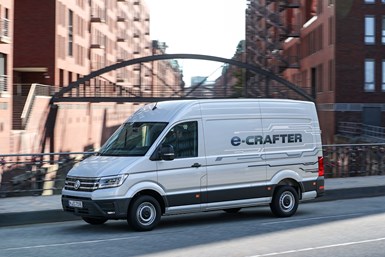The Importance of Commerical Applications for Autonomy
While self-driving vehicles seem to be things that people think may ease their commutes (when WFH is no longer the norm), it may be trucks where autonomy comes to the fore
Although putting people in autonomous vehicles gets a whole lot of attention—think only of Waymo’s efforts in Arizona—unless it is something somewhat clever—like Ford working with Domino’s Pizza on AV pie delivery—the transport of goods doesn’t get as much visibility.

Testing pizza delivery. (Image: Ford)
But arguably, the vehicles that are going to be most impacted by the development of autonomous technology are not going to be those owned and operated by individuals.
Rather, commercial vehicles—as in trucks—are the vehicles that are most likely to become more automated much sooner than personal passenger vehicles.
The reason: Money.
The Need for ROI
The development of autonomous vehicles is non-trivially expensive, so it is more likely to be something that is affordable by a company than a person. Which means, the transport of goods or people as a service can provide an ROI.
And the “I” in “ROI” is a tough nut to achieve, so the companies that are going to be by autonomous vehicles are going to need to have a high level of confidence that they’re going to get that “R,” sooner rather than never.
That’s where commercial vehicles come in.

VW’s Senger: from electric passenger cars to potentially autonomous commercial vehicles. (Image: VW)
Providing some substance to this supposition is this: Christian Senger has been named Head of Development for Autonomous Driving and Mobility- and Transport-as-a-Service (MaaS and TaaS) by Volkswagen Commercial Vehicles.
Which is notable because Senger had been the CEO of Car.Software Organization, a company that Volkswagen Group had established to develop a dedicated operating system for its vehicles, as well as an automobile data cloud and a new electronics architecture.
Presumably that work will continue.
Surfboards, Too
But the VW Commercial Vehicles operation describes itself as the part of VW that develops vehicles that “transport construction workers, families and adventurers, bread rolls, parcels and surfboards. Every day they help countless people all over the world do a good job, they operate as mobile workshops and they bring paramedics and the police to wherever they are needed.”

VW e-Crafter. A work truck. That’s electric. (Image: VW)
While not all of those applications are autonomous-relevant, you can get the sense that they are primarily vocational in nature, which leads to the commercial aspect of autonomous vehicles.
The same argument could be made about vehicles that are powered by something other than internal combustion engines, whether the energy is stored in a battery or a hydrogen tank.
Although companies—with VW being foremost among them—are making huge efforts in providing electric vehicles for consumers, it is interesting to know that Senger had, pre-Car.Software, been the head of e-Mobility Model Range at the VW brand—which made him responsible to the ID family of vehicles that VW is rolling out.
Again, the commercial application of alternative powertrains can not only be easier—after all, vehicles delivering bread rolls or surfboards tend to be operating on a predetermined route so range anxiety isn’t an issue because the logistics have been calculated—but even cost-effective (i.e., it is estimated that given reduced maintenance requirements, the total cost of ownership for an electric commercial vehicle can be less than that of one powered by a liquid fuel engine).
So Senger is undoubtedly going to be playing a role here for Volkswagen Commercial Vehicles, as well.
The import of commercial operations when it comes to autonomy—and electrification—really can’t be overstated.
RELATED CONTENT
-
Choosing the Right Fasteners for Automotive
PennEngineering makes hundreds of different fasteners for the automotive industry with standard and custom products as well as automated assembly solutions. Discover how they’re used and how to select the right one. (Sponsored Content)
-
Multiple Choices for Light, High-Performance Chassis
How carbon fiber is utilized is as different as the vehicles on which it is used. From full carbon tubs to partial panels to welded steel tube sandwich structures, the only limitation is imagination.
-
When Automated Production Turning is the Low-Cost Option
For the right parts, or families of parts, an automated CNC turning cell is simply the least expensive way to produce high-quality parts. Here’s why.


.jpg;width=70;height=70;mode=crop)






